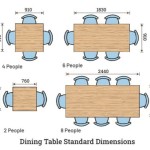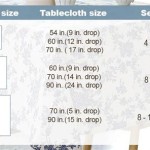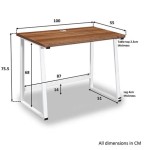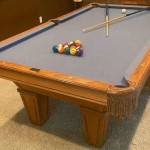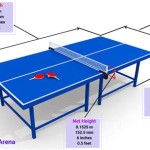Log Coffee Table: A Centerpiece Inspired by The Block
The "Log Coffee Table" is an increasingly popular furniture choice, prominently featured on design shows like "The Block." Its appeal stems from its rustic charm, natural materials, and ability to inject character into a variety of interior styles. This article will explore the design elements, construction considerations, and stylistic versatility of log coffee tables, particularly in the context of modern home design and the trends showcased on programs like "The Block." Understanding these aspects can help prospective buyers make informed decisions when selecting a log coffee table that complements their existing decor and lifestyle.
A log coffee table, in its essence, utilizes a section of a tree trunk as its primary structural and aesthetic component. These tables can range from highly refined, meticulously crafted pieces to those that retain a more raw, natural appearance. The wood species, treatment process, and supplementary materials significantly influence the overall look and feel. Often, a log coffee table is chosen to introduce a touch of the outdoors inside, creating a sense of connection with nature and adding visual warmth to a space.
The incorporation of log coffee tables into modern interior design, as seen on "The Block," demonstrates a growing appreciation for organic elements. Designers frequently use these tables to offset the sleek lines and minimalist aesthetic often associated with contemporary spaces. The contrast between the smooth, manufactured surfaces and the rough, natural texture of the log creates visual interest and prevents a room from feeling sterile. Furthermore, the inherent uniqueness of each log ensures that every table is a one-of-a-kind statement piece.
Key Design Elements of a Log Coffee Table
Several crucial design elements contribute to the aesthetic and functional value of a log coffee table. These include the wood species, the presence or absence of bark, the shape and size of the log, and the type of finish applied. Each element significantly impacts the table's overall appearance and its compatibility with different interior styles.
The
wood species
is a fundamental consideration. Different types of wood offer varying colors, grain patterns, and durability levels. For instance, a coffee table made from oak will exhibit a distinct grain pattern compared to one made from maple. Furthermore, hardwoods like oak, maple, and walnut are generally more durable and less prone to scratches and dents than softwoods like pine or cedar. The choice of wood should be based on both aesthetic preferences and practical considerations, such as the amount of wear and tear the table is likely to endure.The
presence or absence of bark
is another significant design element. Some log coffee tables retain the bark, providing a more rustic and natural look. However, retaining the bark also requires careful treatment to prevent insect infestation and ensure that the bark remains securely attached to the wood. Other log coffee tables are debarked, revealing the smooth wood beneath. Debarking often results in a more refined and contemporary appearance. The decision to retain or remove the bark depends on the desired aesthetic and the level of maintenance the owner is willing to undertake.The
shape and size of the log
also play a crucial role in the overall design. Log coffee tables can be crafted from logs of varying diameters and lengths. A larger diameter log will create a more substantial and imposing piece, while a smaller diameter log may be better suited for smaller spaces. The shape of the log can also vary, with some logs being perfectly cylindrical while others retain a more irregular, organic form. The shape and size should be carefully considered in relation to the dimensions of the room and the other furniture pieces.Finally, the
type of finish applied
can significantly alter the appearance and durability of the log coffee table. Finishes can range from natural oils and waxes, which enhance the wood's natural grain and provide a matte finish, to polyurethane coatings, which offer a more durable and glossy surface. The choice of finish should be based on the desired aesthetic and the level of protection required. A natural oil finish may be preferred for its natural look and feel, while a polyurethane coating may be more suitable for high-traffic areas where the table is likely to be exposed to spills and scratches. It is essential that the finish is non-toxic and safe for use in a home environment.Construction Considerations for Log Coffee Tables
The construction of a log coffee table involves several key considerations, including the drying process, the stabilization methods, and the joinery techniques used. These factors directly impact the table's structural integrity, durability, and longevity.
The
drying process
is perhaps the most critical step in constructing a log coffee table. Green wood, or wood that has not been properly dried, contains a significant amount of moisture. As the wood dries, it shrinks and can warp, crack, or split. To prevent these problems, logs must be properly seasoned before being transformed into furniture. Seasoning can be achieved through air-drying, kiln-drying, or a combination of both. Air-drying involves storing the logs in a well-ventilated area for an extended period, typically several months or even years. Kiln-drying involves placing the logs in a controlled environment where the temperature and humidity are carefully regulated to accelerate the drying process. Kiln-drying is generally faster and more reliable than air-drying, but it can also be more expensive. The method ensures the wood is stable and less likely to develop problems later.Stabilization methods
are employed to minimize the risk of cracking and splitting after the wood has been dried. One common method is to apply a wood stabilizer, a penetrating sealant that helps to control the moisture content of the wood and prevent it from drying out too quickly. Another method is to use butterfly joints, also known as dovetail keys, which are decorative and structural elements that reinforce areas prone to cracking. These joints are typically made from a contrasting wood species and are inlaid into the surface of the log to provide additional strength and stability.Joinery techniques
are used to connect the log to any additional components, such as legs or a base. The choice of joinery technique depends on the design of the table and the materials being used. Common joinery techniques include mortise-and-tenon joints, dowel joints, and screw connections. Mortise-and-tenon joints are strong and durable but require precise craftsmanship. Dowel joints are simpler to execute but may not be as strong. Screw connections are the easiest to implement but can be less aesthetically pleasing if the screws are visible. The joinery must be strong and secure to ensure the table can withstand regular use.In addition to the log itself, many log coffee tables incorporate other materials, such as metal, glass, or stone. These materials can be used to create a contrasting aesthetic or to add functionality to the table. For example, a glass top can provide a smooth and easy-to-clean surface, while metal legs can add a modern touch. The integration of these materials should be carefully considered to ensure they complement the log and enhance the overall design. The quality of these materials is also important for durability and aesthetics.
Stylistic Versatility and Placement on "The Block"
The popularity of log coffee tables on shows like "The Block" highlights their stylistic versatility and ability to integrate into diverse interior design schemes. While inherently rustic, log coffee tables can be effectively incorporated into modern, contemporary, and even bohemian spaces. Their placement within a room significantly impacts the overall aesthetic.
In
modern interiors
, a log coffee table can serve as a focal point, adding warmth and texture to a space dominated by clean lines and minimalist furnishings. To achieve a cohesive look, it is essential to choose a log with a streamlined shape and a smooth finish. Pairing the table with sleek metal or glass accents can further enhance the modern aesthetic. The contrast between the natural wood and the manufactured materials creates a visually appealing tension. The table should be positioned to balance the other elements in the room.In
contemporary interiors
, log coffee tables can be used to create a sense of relaxed sophistication. Opting for a log with a unique grain pattern or an interesting shape can add personality to the space. The table can be paired with comfortable seating and soft textiles to create a welcoming and inviting atmosphere. The placement of the table should consider the flow of traffic and the functionality of the space. The use of neutral colors and natural light can enhance the overall contemporary feel.In
bohemian interiors
, log coffee tables blend seamlessly with the eclectic mix of textures, colors, and patterns. These settings often feature a more raw and natural log, retaining its bark and imperfections. Pairing the table with vintage rugs, colorful cushions, and potted plants can create a relaxed and bohemian vibe. A bohemian design welcomes a more unconventional approach to placement. The table can serve as a grounding element amidst the eclectic mix of objects.The specific placement of the log coffee table within a room is also crucial. In general, the table should be positioned to provide convenient access to drinks and snacks, while also allowing for comfortable conversation. The size of the table should be proportional to the size of the seating area. A larger table may be appropriate for a spacious living room, while a smaller table may be better suited for a smaller space. The height of the table should also be considered in relation to the height of the seating. Ideally, the table should be approximately the same height as the seat cushions of the sofa or chairs. The log coffee table can also be used to define different zones within an open-plan living space.
Ultimately, the success of a log coffee table lies in its ability to complement the existing decor and reflect the homeowner's personal style. By carefully considering the design elements, construction considerations, and stylistic versatility of these tables, homeowners can select a piece that not only adds beauty and functionality to their space but also creates a lasting connection with nature.

Diy Log Coffee Table Kit K A Furniture Construction

Block Cedar Coffee Table For At 1stdibs Tables Wood

Log Coffee Table Modern Studio

Phillips Collection Log Roman Coastal Beach Off White Resin Outdoor Block Coffee Table 31 W 40 Kathy Kuo Home

Rectangular Log Coffee Table 3d Model Cgtrader

Phillips Collection Log Roman Coastal Beach Off White Resin Outdoor Block Coffee Table 31 W 40 Kathy Kuo Home

Log Coffee Table Silver Leaf

Log Pile Coffee Table The Green Head

Phillips Collection Log Roman Coastal Beach Off White Resin Outdoor Block Coffee Table 31 W 40 Kathy Kuo Home
Extraordinary Coffee Table Ideas And Designs Renoguide N Renovation Inspiration


